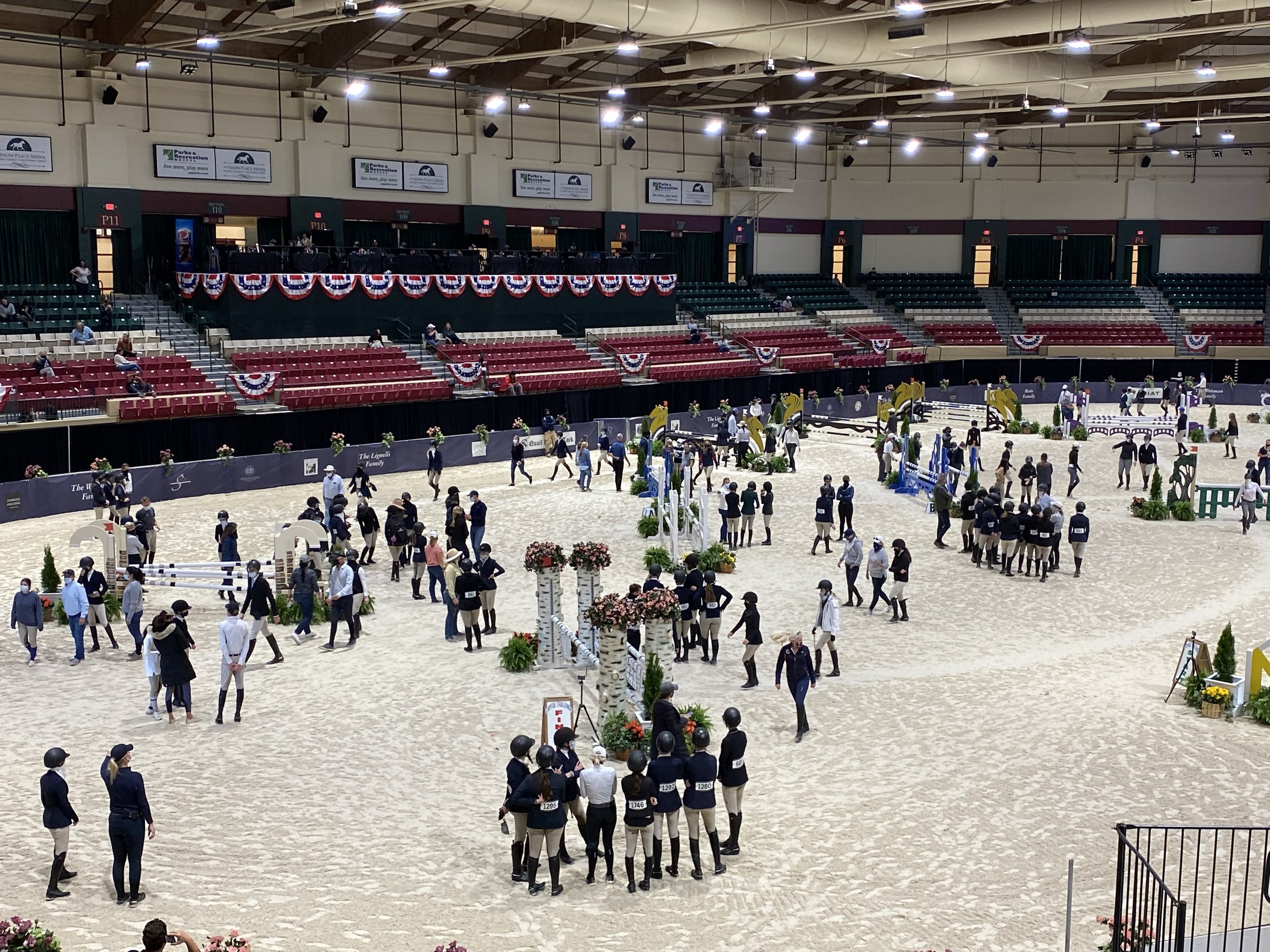Q&A With Ken Krome, Veteran Course Designer at CCHS
Ken Krome Photo: Jennifer Wood Media
The multi-talented course designer on perfection, lightning-fast “power builds,” bringing your A-game, and the time he built a whole course upside-down
What is your history with CCHS and your current role and responsibilities?
I am the course designer for everything: hunter, jumper, equitation classes, and finals. We are currently a team of three because the show has grown and gotten so much busier that it’s now a three-person job.
I started at Capital Challenge (CCHS) about 15 years ago. Back in the day, there was just one course designer, Mike Rheinheimer. Mike had done everything since the horse show’s inception, but it grew and grew, and they added more and more jumper classes. Initially, I came in just for the jumper classes, but when Mike moved on, I filled in, and I’ve done it every year since.
A few years ago, I only had one other course designer, but now I work with Joe Carnicom, and just recently, we brought on Megan Rawlins, too. We have a really strong team, and we alternate who does more indoors or outdoors each year. It’s neat because we work together, and it’s a collaborative effort; we show each other our courses and then make changes, so the end product is a really good one.
What made you want to get involved with CCHS?
I mainly wanted to be involved because CCHS has such a high standard and level of attention to detail. The perfection is like no other horse show, so it’s great to be part of a team — a family, really — where everyone is expected to bring their A-game. It’s not just another horse show because they hire exceptional jump crew guys who are very well-treated, so they’re happy. I love the fact that everything is expected to be done absolutely perfectly — from the placement of the plants and the numbers — everything is done quickly but precisely.
What is your favorite thing about CCHS, and what makes it unique?
It is the family atmosphere of the whole thing. Many of the employees have been there for a long time. The way they treat the exhibitors — with lots of places to hang out and lots of food provided — makes it a very comfortable, cooperative show for everyone. CCHS is the first show of the fall season where all the Californians come, so it’s a nice meeting of the East Coast and West Coast, and everyone is made to feel special. The management are horse folk too, so there is a lot of thought that goes into how to make the horses happy and comfortable.
I love all the neat finals. There are equitation finals for children of different ages, plus finals for adults. There is so much high-level equitation, it’s like no place else. Top that with the pre-green hunter divisions, where it’s unique how they divide it by horse genders and ages. It’s the best collection of young hunters anywhere in the country, and the high-level hunters are the best of the best. It’s not just the employees who bring their A-game; the riders do, too.
What makes you keep returning to CCHS?
It’s a privilege to work there, and I look forward to it every year. It’s a long two weeks with a lot of hours invested, but the reward is also very high.
How did you get into course designing?
I grew up as a horse guy riding, competing, showing, teaching, and training, and I noticed that some shows had terrible courses. Some courses were awkward or inappropriate for the horse, and the questions asked were not good questions. The course is the test, and a lot of those were bad tests.
There was one designer called Richard Jeffery, and every time I rode his courses, they were fair and balanced. I have a mathematical brain, and they made sense to me, so I started apprenticing with him, and he took me under his wing. Eventually, I started to do my own rings, and he would oversee them. He’s been a great mentor ever since.
I still split my time equally between the riding and showing and the course designing. I’m a registered “R” hunter and jumper course designer and a FEI three-star course designer.
Capital Challenge course walk
Any funny anecdotes from CCHS?
At CCHS, we have “power builds,” so we go from a totally empty ring to a ready-to-jump course in 17 minutes, including plants, brush, decorations — everything. We do it every morning from scratch after the riders hack in the ring and get their horses comfortable.
For the show to run like it does, every minute of every day is accounted for. We are given a time schedule down to the minute. They keep records from one year to the next of how long everything takes, and we are expected to meet or beat the previous year’s times.
One year, I held my course map upside down during the build, and we laid out the whole course before one of the crew guys pointed it out. Me laying rails in the wrong place was a tragic accident, but we recovered well and, with good backup, we managed to finish up right on time.
What are you most looking forward to at this year's show?
It’s honestly like going back to see family. I grew up showing with manager Oliver Kennedy. I’ve known everyone who works there for a long time, and being part of a top-level team is a great thing.
It really is an amazing show as far as how the horses go there and how well the horse show accommodates the horses’ needs. They manage to take what is basically a fairground and dress it up. They spend weeks making it look nice. It’s an amazing build process, and they make everything feel so special.


